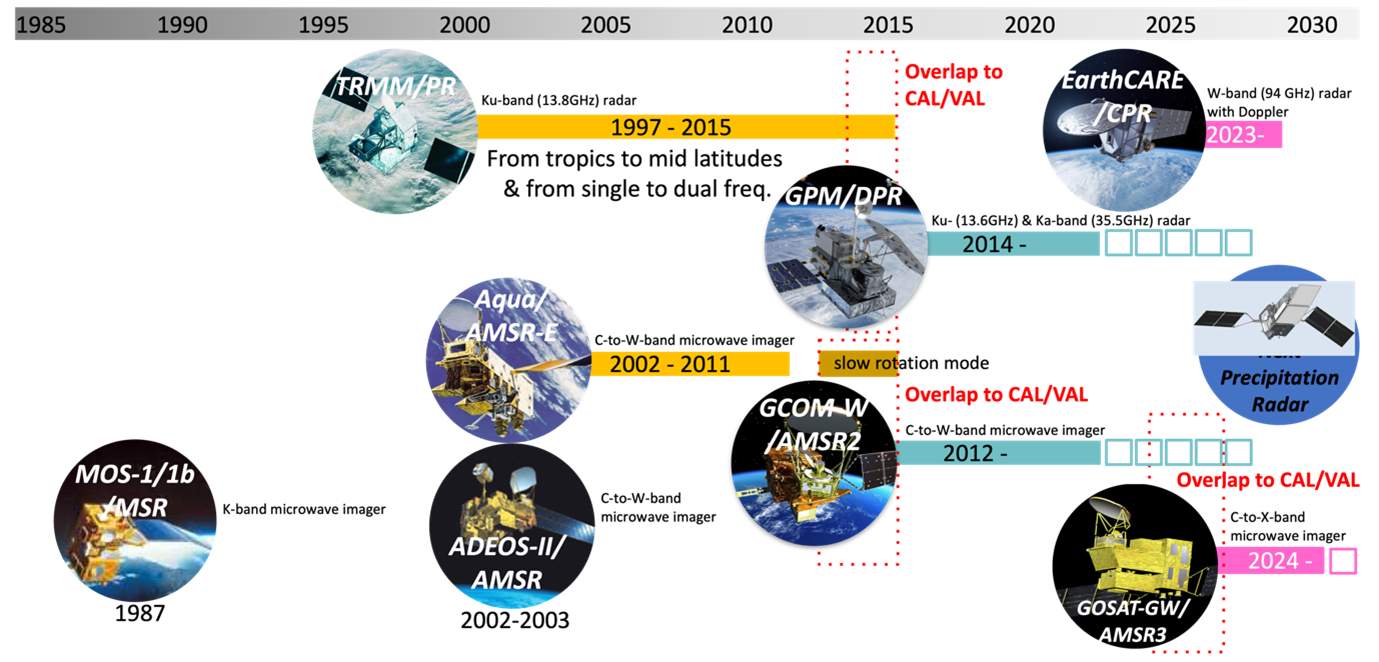CW3E Publication Notice
Advances in Precipitation Retrieval and Applications from Low Earth Orbiting Satellite Information
September 27, 2023
CW3E postdoctoral researcher Vesta Afzali Gorooh, in collaboration with the UCI Center for Hydrometeorology and Remote Sensing, NOAA-NESDIS, NASA-JPL, and UMD System Science Interdisciplinary Center recently published a paper titled “Advances in Precipitation Retrieval and Applications from Low Earth Orbiting Satellite Information” in the Bulletin of the American Meteorological Society. This article summarizes a virtual NOAA workshop on “Precipitation Estimation from Low Earth Orbit Satellites: Retrieval and Applications,” organized with support from the Office of Low Earth Orbit Observations at NOAA-NESDIS.
The workshop brought together experts in satellite precipitation retrieval and operational data users for the two-day event (1-2 March 2023). It covered the state of the science and users’ needs for operational precipitation algorithms and products from current and future meteorological satellites (Fig.1). The work contributes to the goals of CW3E’s 2019-2024 Strategic Plan by sharing insights from the hydrologist, atmospheric scientists, and stakeholders, who provided essential insights for enhancing satellite-based precipitation sensing and addressing the associated requirements and considerations, resulting in the following overarching recommendations:
- Observation system and data delivery requirements: NOAA should actively collaborate with national and international partners to enhance precipitation-sensing microwave sensors for frequent updates (hourly to sub-hourly). It is crucial to prioritize timely access (within one hour) to satellite data for nowcasting and short-term forecasting by expanding data acquisition capacities. Maintaining a joint satellite precipitation radar and passive microwave (PMW) radiometer reference systems is crucial for ensuring accurate intercalibration of constellation radiometers used in Level-3 global precipitation datasets.
- Value/impact studies: NOAA should consistently invest in performing impact studies on precipitation products when new observation capabilities are introduced, involving domestic, international, and private sector partners, and these studies should also precede any decisions regarding decommissioning existing observation capabilities. NOAA should maintain its active involvement in International Precipitation Working Group activities, serving as a crucial platform for scientific collaboration in precipitation retrievals, facilitating the improvement of existing techniques, the development of innovative methodologies, and the resolution of pertinent challenges.
- Measurement requirements: NOAA should use satellite/sensor impact study results to define and specify desired channel requirements, including resolution and polarization for PMW-based rainfall and snowfall retrieval, including window channels near 6, 10, 19, 37, and 89 GHz, together with temperature and water vapor sounding bands near 23, 50, 118, 166, and 183 GHz and higher.
- Algorithm development and applications: The meeting showcased the enhancements of satellite precipitation estimation through diverse probabilistic and machine learning methods alongside global radar and ground observations for uncertainty assessment. Collaboration with the user community is essential for establishing a robust climate data record using precipitation radar reference, particularly given the long duration of operational PMW satellite missions dating back to 1987 with the Special Sensor Microwave Imager (SSMI) series. Moreover, incorporating spaceborne radars to calibrate passive sensors and integrating ground-based observations are vital for identifying errors and enhancing precipitation retrievals. Incorporating precipitation parameterizations and prior ground observation data can reduce uncertainties in spaceborne radar measurements, leading to more accurate and dependable multi-satellite precipitation retrievals. It is also recommended to develop location-specific error and uncertainty models for satellite products to optimize their use in hydrological modeling, water resource management, and climate studies, considering regional variations, timeframes, and specific applications.
Figure 1: Precipitation-related missions in Japan (Source: Misako Kachi and Takuji Kubota Presentations)
Afzali Gorooh, V., and Coauthors, 2023: Advances in Precipitation Retrieval and Applications from Low Earth Orbiting Satellite Information. Bull. Amer. Meteor. Soc., https://doi.org/10.1175/BAMS-D-23-0229.1, in press

